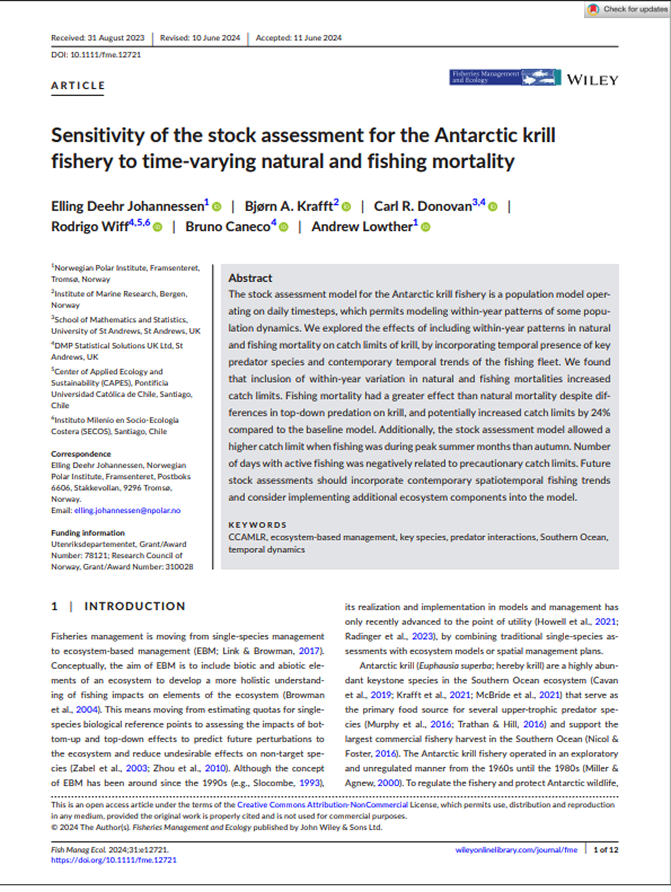Antarctic ecosystem
Climate
Krill (Euphausia superba)
The enormous repetitive Antarctic krill genome reveals environmental adaptations and population insights
Summary
This study presents the first complete genome assembly of Antarctic krill, revealing a massive 48.01 billion base pair genome - the largest animal genome assembled to date. The enormous size results from extensive repetitive DNA sequences (92.45% of the genome), particularly jumping genes that copy themselves throughout the genome. The genome reveals molecular mechanisms underlying krill's adaptation to Antarctica's extreme seasonal environment, including expanded gene families for molting and energy processing, and a complete biological clock system. Population genetic analysis of 75 individuals from four Antarctic regions shows essentially one interconnected population with high gene flow, though subtle genetic differences exist due to environmental pressures on specific genes. Population history analysis indicates a major population bottleneck approximately 10 million years ago followed by expansion around 100,000 years ago, coinciding with major climate change events.

1
Distribution of repetitive DNA content across the genome shown in non-overlapping 10 kilobase sections.Key Findings
1
1. First complete Antarctic krill genome at 48.01 billion base pairs - the largest animal genome assembled to date.2
2. The genome is 92.45% repetitive sequences, with DNA jumping elements being the dominant component.3
3. Molecular structure of the biological clock system reveals adaptation to extreme polar light-dark cycles.4
4. Twenty-five significantly expanded gene families are related to molting and energy processing functions.5
5. Population analysis shows one interconnected population around Antarctica with high gene flow between regions.6
6. Environmental pressures were detected on 387 adaptive genetic variants across the genome.7
7. A population bottleneck occurred approximately 10 million years ago, followed by expansion around 100,000 years ago.8
8. Genetic diversity remains low despite large population size, illustrating a known evolutionary puzzle (Lewontin's paradox).

